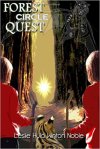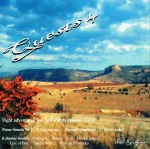The following is a guide I formulated to keep my own thinking straight.
- A glyph is a symbol used for a meaning not complete in itself.
An ellipsis is a sign or glyph such as [‘ … ’] used in printed text indicating:
1: The omission of one or more words that are understood in the context, but that would need to be supplied to make a construction grammatically complete;
2: A sudden leap from one topic to another;
3: That words have been left out;
4: Particularly in informal writing, a pause in dialogue or narrative, or a character or narrator trailing off.
SPECIFIC ELLIPSES, BRACKETS AND SQUARE BRACKETS RULES WITH A DASH OF DASHES
These are the rules which I have drawn up as making sense to me, and which I apply as far as possible:
- Use the ellipsis glyph rather than three dots to avoid having it split at the end of a line (Word does overcome this, but some programmes may not).
- The default should be a space before and a space after … thus. I consider this preferable to the frequently used system of having no space… after the preceding word, regardless of whether that word is complete or not.
- For incomplete words, no space tailing off or leading in. ‘Exa…’ ‘…mple.’
- Never leave a space between the ellipse glyph and preceding or following punctuation: …! (Except in this case on the preceding : !)
“This shows …’ ‘… how it should be done.’ and
‘This shows … ’ ‘ … how it shouldn’t.’ - Use dashes rather than ellipses to indicate – briefly – shorter breaks or insertions.
- An insertion completely breaking the flow (this flow is broken here with a wording which would be disjointed if one replaced the brackets with commas) is better with brackets.
- Sections left out should be indicated with square brackets enclosing the ellipsis glyph […]. There is a trend to leave the square brackets out. This trend needs to be reversed.
- Editorial insertions should have square brackets. [Better to distinguish them thus!]
- To indicate a longer break use dots evenly separated by spaces . . . like this. Beware of this running beyond the end of a line.
- Be consistent in using a full stop after ellipses, where applicable, or not doing so. Purists insist on four dots if a new sentence begins beyond the ellipsis, the last one to show the sentence has ended even if incomplete. My personal feeling, which I apply in writing and encourage when editing, is that a tailing off sentence never does end, and that the ellipsis glyph replaces the full stop.
- However, if the ellipsis ends an incomplete quote, but appears at a place where the sentence within the quote ended, ‘then the fourth point is appropriate ….’ but is clearer if separated by a space, which logically should appear thus. …’


















. . . still waiting for Rough Seas to comment . . .
Also, why is it that I show as following this blog but I don’t get notifications? . . . perhaps (think I) I need to resubscribe […!]
Actually, even though I’m following, it still gives me the choice to get notifications by e-mail.
. . . perhaps that is what I need to do[!] . . .
LikeLike
Yes, I have fallen into that trap in the past and wondered why I kept missing new stuff. Posts appear on the Reader, if one has time to view it, but no notification unless one either chooses that option on the blog or on one’s own following list.
LikeLike
Hmm . . . yeah, but I used to get notices. Come to think of it, I need to check on a few other blogs I’ve not heard from recently.
LikeLike
I found this post highly entertaining as well as cogent and salient. I sometimes despair of what is happening to the English language with the influence of texting “lexicon” and instant messaging abbreviations. I’ll admit the actual nitty gritty mechanics of how our sentences should be riveted together is not my favorite aspect of the language, as the words themselves hold my heart. But should I ever need to brush up on how to correctly use brackets, ellipses and other mysterious symbols on my keyboard, I’ll know where to look.
LikeLiked by 1 person
Very glad you found it informative. I, too, tend to despair regarding English usage, particularly when I find it being abused by those who are supposed to teach it at schools and universities.
LikeLiked by 1 person
‘THIS’ is why I have an editor.. . …?.
LikeLiked by 1 person
Good reasoning!
LikeLiked by 1 person
Sack the rules! They were made to be, well…broken–right? 😉
LikeLike
I’m lost!
LikeLike
*soothingly* Just follow the ellipses until you get to the brackets.
LikeLike
I’ll try.
LikeLike
You’re making a racket about positioning a bracket,
Now what is a poor writer to do?
Where go the dots or where they go not,
I’m now in a bit of a stew
LikeLiked by 1 person
You’ll find even fools can follow my rules,
As long as they’re lit … and, um, er, erate,
From going to certain suitable schools,
And not being a total misfit.
LikeLiked by 1 person
I’m stumped for a riposte,
The Col is ‘bad’
When it comes to gramma-r,
I stick to gran-dad.
( That’s all I got … as you can see, I am scraping the bottom of the barrel here. )
LikeLike
Formidable (in French accent). I’d forgotten about square brackets. Also, I didn’t follow 4, which seems to contradict 11.
LikeLike
On reflection, (4) only seems to work properly with inverted commas. There are too many exceptions to the rule with other forms of punctuation even though it generally applies to them as well.
LikeLiked by 1 person
Beautifully explained! Really well done.
LikeLike
Though I’d have preferred it to rhyme, coming from you…
LikeLike
It is hard enough to follow, as it is – rhyme would have made total gobbledygook out of it ! 🙂
LikeLiked by 1 person
Still I’d love to see you try – you’d make it work, I’m sure of that. 🙂 Master of rhymal prose.
LikeLike
Don’t make a racket, ’tis only a bracket,
LikeLiked by 1 person
One only makes the racket if
It is a vital sort of glyph.
LikeLike
LOL LOL, Ark! 😀
LikeLike
Thanks muchly!
LikeLiked by 1 person
[-2{3a(x + y)(-4x + 3y}] = ?????
LikeLiked by 2 people
I don’t use the dotty (or squiggly) brackets, so I’m glad you have supplied the answer, which is ‘?????’.
I was going to say the answer is a lemon.
LikeLiked by 1 person
Puss there’s a curved bracket missing near the end 🙂 Meow.
LikeLike
Good eye sight you have 😉
LikeLiked by 1 person
Probably the screws pulled out and it fell off. I would have guessed it rusted, but she is no longer living close to the sea.
LikeLiked by 1 person
😀 Oh no! There was a screw loose?
😦 Why is she no longer at the sea? This is not good! Poor Pussycat!
LikeLike
Ah. Do you really want me to comment? 😀
LikeLike
Indeed I do – if you do not subscribe to any or all of these ideas feel free to crit at any length and with as much vitriol as you are inclined to pour!
LikeLike